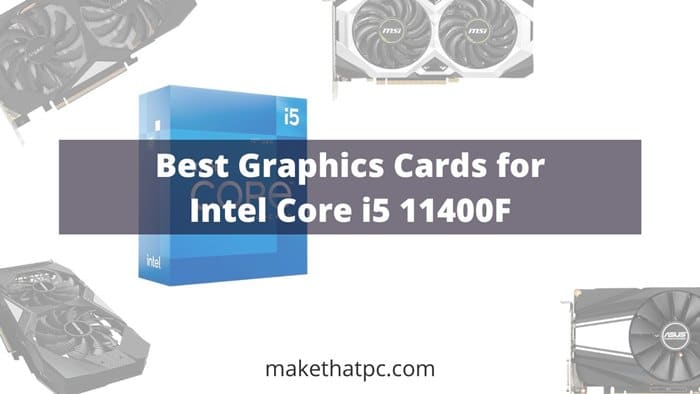The Intel Core i5 11400F gaming processor is an option that doesn’t break your bank, and it also couples integrated graphics. For the record, it can run the most well-known games on medium settings. However, you may find issues with some games that demand high-end graphic push. That’s the reason why I’ve done the legwork in bringing out the most reliable graphics card for your i5 11400F. Also, I will be trying my best to save a bit of your hard-earned bucks.
In case you didn’t know, the Intel Core i5 11400F was released in mid-2021. It is probably the best gaming CPU under the $200 price bracket. For the most part, it can handle high-end GPU cards. However, it is essential to know which GPUs might sync best with your system.
For instance, i5 11400F is compatible with the RTX 3090. Despite being able to offer you excellent 4K performance, I do not recommend it because of the significant price difference between the GPU and your CPU. I feel that you can get more bang for your buck by choosing a well-balanced combination, and also durability for the long run.
Now, if you are confused about which graphics card will work best for you, it is essential to consider the specifications and performance of each GPU first. If you don’t pair it up wisely, you may end up getting an undesired resultant performance.
That’s the reason I’ve curated this list of the best graphics card for your 11th-generation Intel CPU. For the most bit, they will allow you to play games at resolutions between 1080p and 1440p, with at least 60+ frames per second in most titles. Let’s have a look at them, shall we?
1. GIGABYTE GeForce RTX 3060 Gaming OC
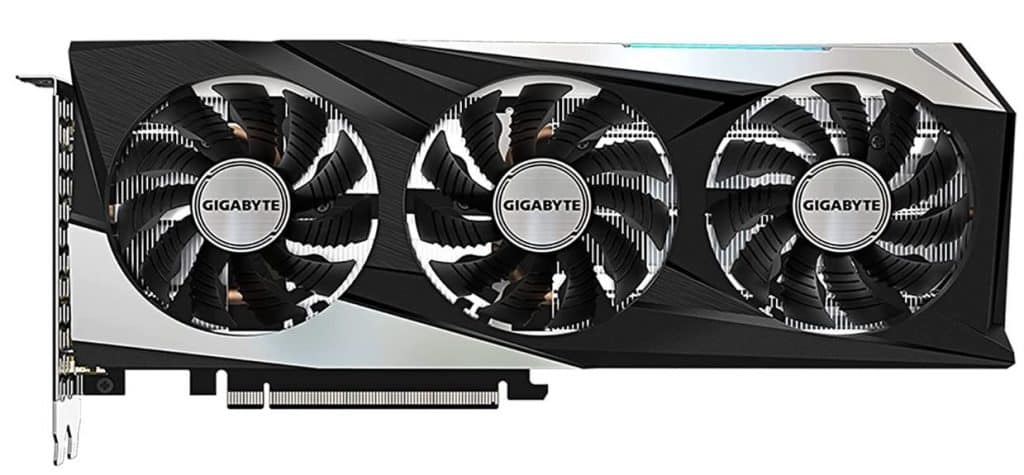
Key Specs
- Ampere architecture.
- 12GB GDDR6 RAM
- 1882MHz is the frequency for the clock (Boost).
- 3584 Cuda Cores
- 170W TDP
Nvidia’s Ampere series is the fastest in this list yet, for capabilities such as Ray-Tracing or DLSS. The new architecture has surpassed the last iteration of the RTX 3060’s performance by a long shot.
Relying on my test suite, I can safely say that the RTX 3060 outperforms almost 80% of graphics cards currently sold on the market in 2023. For the record, even the base model is still faster than the RTX 2060. The RTX 3060 delivers up to 30% more performance when compared to the RTX 2060.
The secret is the refined Ampere architecture that makes it the fastest with standard graphics settings. It also does Ray Tracing much faster than the RTX 2060 series. It has more than twice the GDDR6 RAM (12GB) and 3584 Cuda Cores (than 3560 Super).
Lastly, you can enjoy 4K gaming at 65+ FPS on almost all AAA titles. All of these packs are in a pretty reasonable price tag, an easy recommendation for all you hardcore gamers out there.
2. MSI Gaming GeForce RTX 3060 Ti
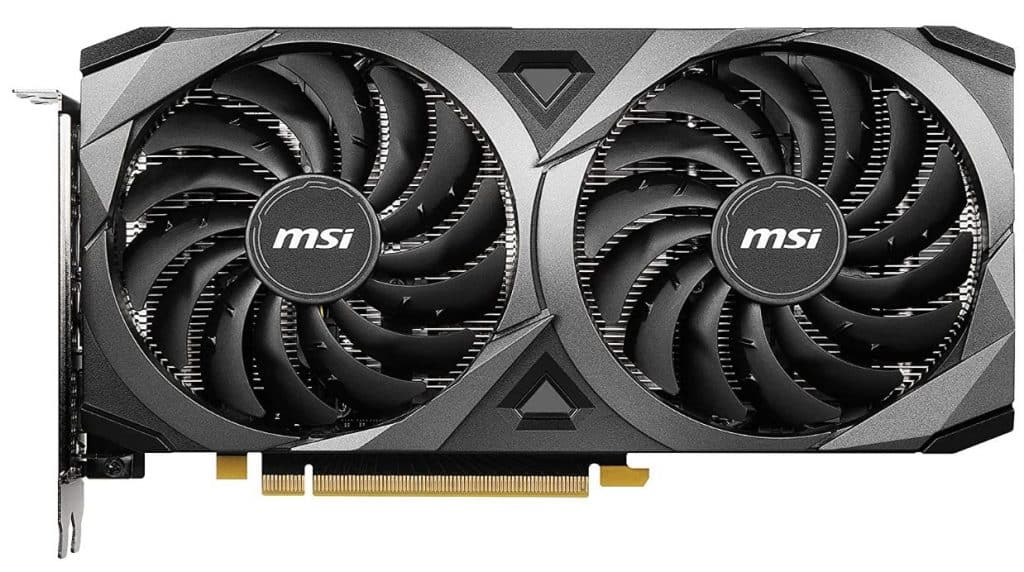
Key Specs
- 8GB GDDR6 RAM
- 1830MHz Maximum boost
- 4864 Cuda Cores
- TDP 240W
The RTX 3060Ti is the faster brother to the above-mentioned 3060 and offers a 15% performance boost. It provides less memory of 8Gigs than 3060 but faster speeds and 1280 additional Cuda Cores, which speeds up overall processing.
Though MSI Gaming GeForce RTX 3060 Ti has about 4GB less VRAM than the 3060, however, the memory interface is more extensive, which is 256 bits. Again if we compare it to the RTX 3060, it has only a 192-bit interface.
You might think that less VRAM means lower performance. Well, that’s not completely true! For most games, 8GB is sufficient. For the record, the memory requirements are even more critical. As discussed earlier, the RTX 3060 Ti has 1.35 times as many Cuda Cores as the RTX 3060. In case you didn’t know, Cuda Cores increase process execution speed, which results in better performance.
Added to that, the RTX3060 Ti can be enabled with Ray-Tracing and is capable of maxing out games at 1440p and providing playable framerates when necessary.
3. ASUS Phoenix NVIDIA GeForce GTX 1650
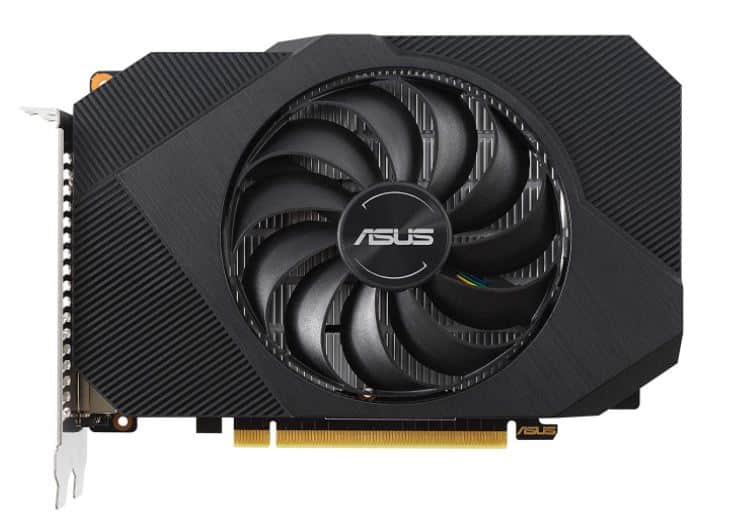
Key Specs
- Turing architecture
- 4GB GDDR6 RAM
- 1665MHz is the frequency for the clock (Boost).
- 1280 Cuda Cores
- 100W TDP
The ASUS Phoenix Nvidia Geforce GTX 1650 can fetch you 60 frames per second in most AAA games. This means you can still have a great gaming experience with a budget of around the $200 mark. Unfortunately, it can’t max out all settings, however, it is probably faster than any other card at this price.
Furthermore, the memory operates at 12Gbps rather than 8Gbps (a significant upgrade from its predecessors). This results in a much noticeable increase in frame rates. You can play 1080p games with ease, as it has 4GB of VRAM and 90% of games allow you to maximize graphical settings.
As I said earlier, it can provide 60 frames per second for most AAA games. This makes it an ideal entry-level GPU for gamers who are eSports enthusiasts, and it also requires less power to run. All in all, this card is pretty decent and worth every penny. It can be powered by one 6-pin power cable and has a TDP of up to 100W. However, do note The card’s power consumption will increase if it is overclocked.
4. MSI Gaming GeForce GTX 1660 Super
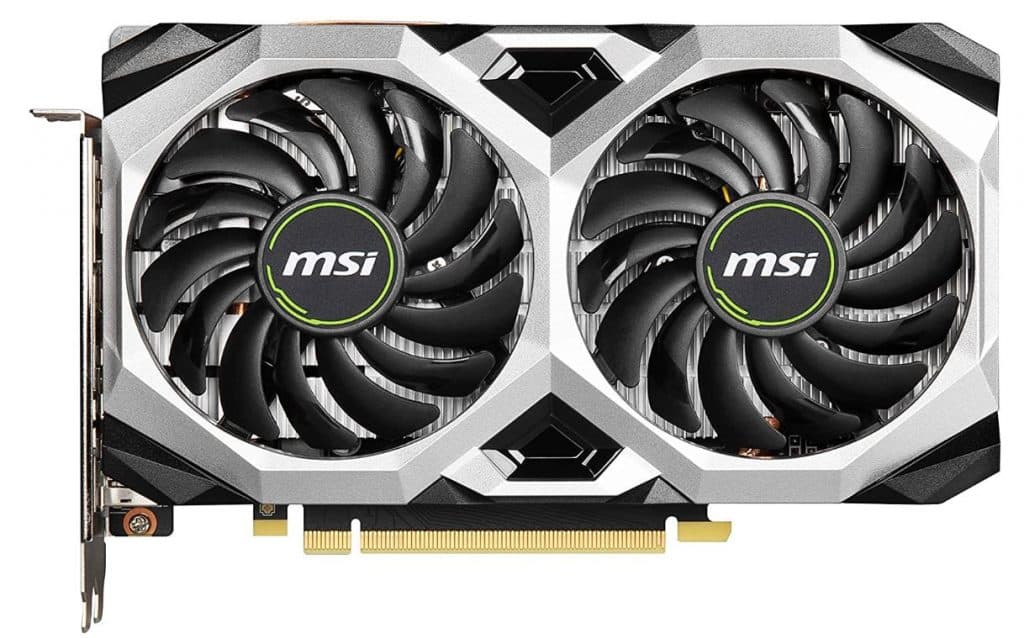
Key Specs
- Turing architecture
- 6GB GDDR6 RAM
- Boost Clock is 1815MHz
- 1408 Cuda Cores
- TDP 125W
The MSI Gaming GeForce GTX 1660 Super is capable of almost all AAA titles in high-ultra settings. The best part is the 1080p future-proof option can maximize graphical settings due to its 6GB VRAM. It comes with a pretty convenient capability for anti-aliasing and texturing.
For the record, the GTX 1660 Super is following in the footsteps of the GTX 1650 Super. What I find the most shocking is that the 1660 Super is almost the same price as the GTX 1660 non-Super edition card. But the SUPER boasts faster GDDR6 RAM with a speed of up to 14Gbps, and 6GB VRAM to boost textures at 1080p.
Furthermore, according to my tests, this card performs 20% faster than any other card in this price bracket, while certain games further increase this performance gap. According to me, the MSI Gaming GeForce GTX 1660 Super graphics card is a great choice for your i5 11400F. It will run at 100 percent potential when coupled together and has plenty of storage for extra performance that you might use for background tasks as well.
5. MSI Gaming Radeon RX 5600 XT
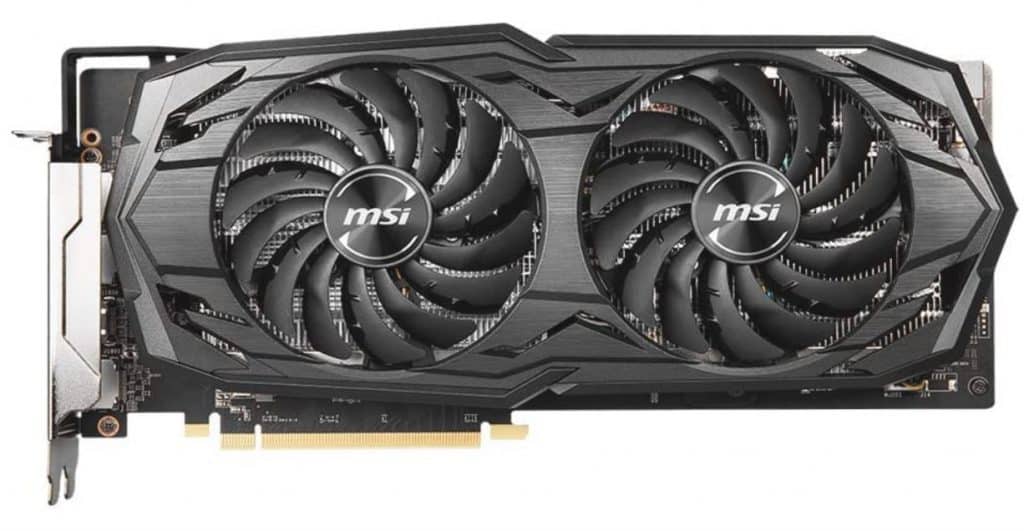
Key Specs
- Navi architecture.
- 6GB GDDR6 RAM
- 1620MHz clock speed (Boost)
- 2304 Stream Processors
- 150W TDP
The RX 5600 XT GPU is currently the best at $650. Its robust architecture outperforms Nvidia’s Ge Force RTX 2060 fair and square. Added to that, it can run games at 1440p quality with ease.
For the record, Nvidia’s RTX 2060 is about the same price range. The RX5600 XT comes with 6GB of GDDR6 RAM and is currently the best value for a constant 60 fps gaming.
According to my tests, it can run up to 20% faster than the GTX 1660 Super and is comparable to the RTX 2060 for almost all games. However, it does have a slight 5% slight less performance in a couple of titles, such as Metro Exodus and Forza Horizon, when compared to the RTX 2060.
Furthermore, it has 2304 Stream processors and 336GB/s of memory bandwidth. The 150W TDP is also included. Hands down, it is an excellent option to kickstart your 1440p gaming experience.
In a Nutshell
Well, there you have it! Those were the best graphics could ever consider for your Intel Core i5 11400F gaming processor in 2023, till now. All that’s needed to be done now is for you to pick one according to your budget and preferences… and that’s all!
Connect with us:

I am Anshul Rana, an experienced author specializing in PC gear reviews and Windows 10 software tutorials. With a strong passion for technology and an in-depth understanding of the PC industry, I provide insightful and detailed analyses of computer peripherals, gaming gear, and software solutions. My writing style is concise yet informative, making complex topics accessible to both beginners and advanced users. Through my reviews and tutorials, I aim to offer valuable guidance, helping readers make informed decisions to enhance their PC experience and explore the vast possibilities of Windows 10 software.
